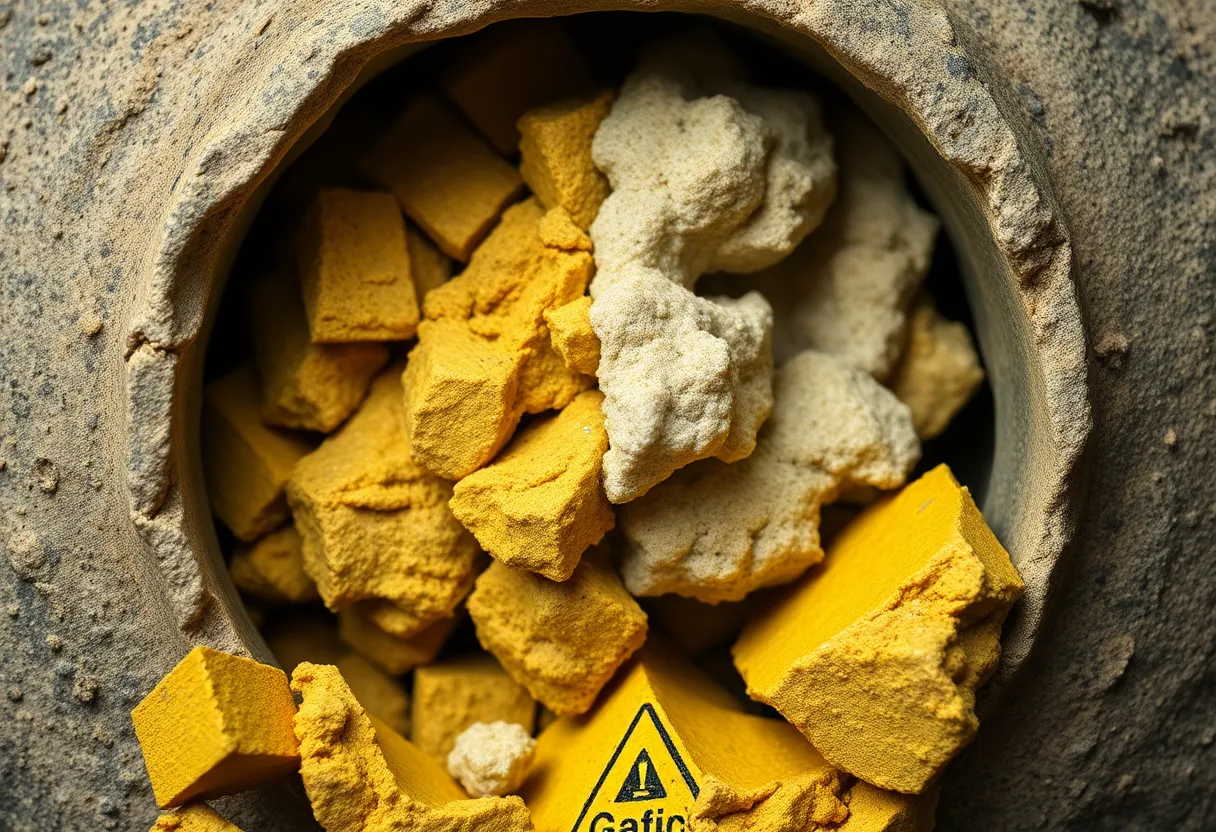News Summary
The EPA is reconsidering its ban on chrysotile asbestos amid industry opposition and ongoing health concerns related to this carcinogenic mineral.
Chrysotile Asbestos Ban Faces Re-examination Under EPA
The ongoing battle over chrysotile asbestos, a notorious carcinogen, takes another twist as the Environmental Protection Agency (EPA) grapples with a reconsideration of its recent ban. The controversial mineral, synonymous with severe health issues and potential deaths, could soon see its use expanded under the EPA’s scrutiny.
The Rollercoaster of Regulation
The Biden administration finalized a ban on chrysotile asbestos set to take effect in 2024, marking a significant step in the fight against asbestos-related diseases such as mesothelioma and lung cancer. However, the current administration has requested a 30-month pause from an appeals court, prompting concerns among advocates that any reversal of this ban could jeopardize thousands of lives. The push for legal reconsideration has drawn criticism, as industry groups label the ban as an “overbroad approach” to the Toxic Substances Control Act (TSCA) of 1976, causing fears of returning to outdated policies that endanger public health.
Health Risks and Mortality Rates
A stark reminder of the dangers posed by chrysotile asbestos is the alarming statistic that every thirteen minutes, someone in the U.S. succumbs to an asbestos-caused disease. In fact, exposure is linked to over 40,000 annual deaths. The toxic nature of asbestos has led over 50 countries to impose a complete ban on its use, suggesting a global acknowledgment of its perilous health risks. Medical experts assert that even a minimal exposure can significantly increase an individual’s risk of developing cancer.
Industry Opposition and Legal Struggles
Amid recent developments, various organizations such as Olin Corporation and numerous chemistry councils have pursued legal action against the EPA’s ban, claiming it encroaches on their rights under TSCA. They argue that the regulation is arbitrary and beyond the EPA’s jurisdiction, resurrecting memories of the last unsuccessful attempt to ban asbestos by the EPA in 1989, which was subsequently overturned by the Fifth Circuit Court of Appeals. The industry’s resistance to the ban reveals a complex interplay between public health advocacy and corporate interests.
Chrysotile Asbestos Still in Use
Despite the regulatory efforts, chrysotile asbestos remains imported and utilized in select sectors, particularly within the chlor-alkali industry. There are currently eight facilities in the U.S. employing asbestos diaphragms for the production of chlorine and sodium hydroxide. The continued presence of this carcinogen in American industry raises critical questions about the effectiveness of ongoing regulatory measures and the readiness of the EPA to handle the rising opposition.
A Legacy of Controversy
The narrative surrounding asbestos has long been tainted by political influence. The Trump administration touted the mineral, with former President Trump asserting that it was “100% safe” when properly applied. This misguided perspective has contributed to a broader public misconception of asbestos safety, blaming the negative perception on organized crime and muddied regulatory history. Meanwhile, the EPA remains under scrutiny with concerns over potential inefficacy due to budget cuts and policy shifts during the previous administration.
Proposed Legislation: A Ray of Hope?
In response to the threats posed by weakened asbestos regulations, proposed legislation known as the Alan Reinstein Ban Asbestos Now (ARBAN) Act aims to comprehensively eliminate all forms of asbestos in the U.S. This legislation seeks to solidify the federal commitment to public health amid growing evidence of asbestos’s dangers. Senator Jeff Merkley has criticized previous administrations for undermining health advancements in this area.
Conclusion: The Fight for Public Health Continues
The contentious debate surrounding chrysotile asbestos lays bare broader issues of regulatory responsibility and the ongoing struggle between corporate profit and public health. As the EPA weighs its next steps, advocates for a total ban remain vigilant. The implications of this regulatory landscape could be far-reaching, impacting countless lives as the nation grapples with the legacy of asbestos and the imperative for robust health protections in the workplace and beyond.
Deeper Dive: News & Info About This Topic
HERE Resources
The Importance of Early Screening for High-Risk Groups
Family Seeks Justice After Tragic Mesothelioma Diagnosis
Major Changes Ahead in Surry County Schools: Retirements and Infrastructure Remediation
Violation Alert: Patten Town Faces Consequences Over Asbestos Removal Blunder
The Future of Asbestos: A Revolutionary Decarbonization Project in Quebec
The Hidden Cost of Service: Asbestos Exposure on the USS Higbee
Revolutionary Breakthrough: Gene Changes Linked to Asbestos-Induced Mesothelioma Uncovered
Asbestos and Lead Cleanup Underway at Great Falls National Park
Trumbull Center Asbestos Update: Community Concerns Alleviated
Asbestos Concerns Stir Up Action in Surry County Schools
Additional Resources
- AP News: EPA as Trump and Biden Battle Over Asbestos Ban
- Wikipedia: Asbestos
- Newsweek: Trump Rolling Back Asbestos Ban
- Google Search: Chrysotile Asbestos
- NY Times: EPA’s Asbestos Ban Delay
- Google Scholar: Asbestos Ban 2025
- Ars Technica: Trump’s EPA Reconsiders Asbestos Ban
- Encyclopedia Britannica: Asbestos Regulation
- Google News: Asbestos Health Risks



















